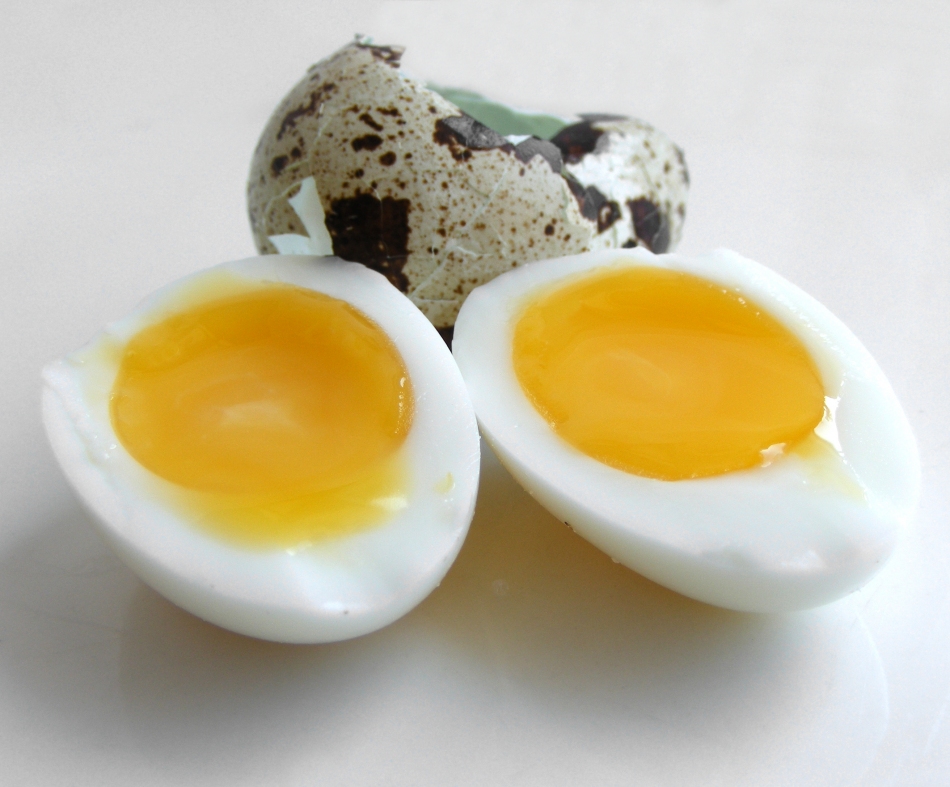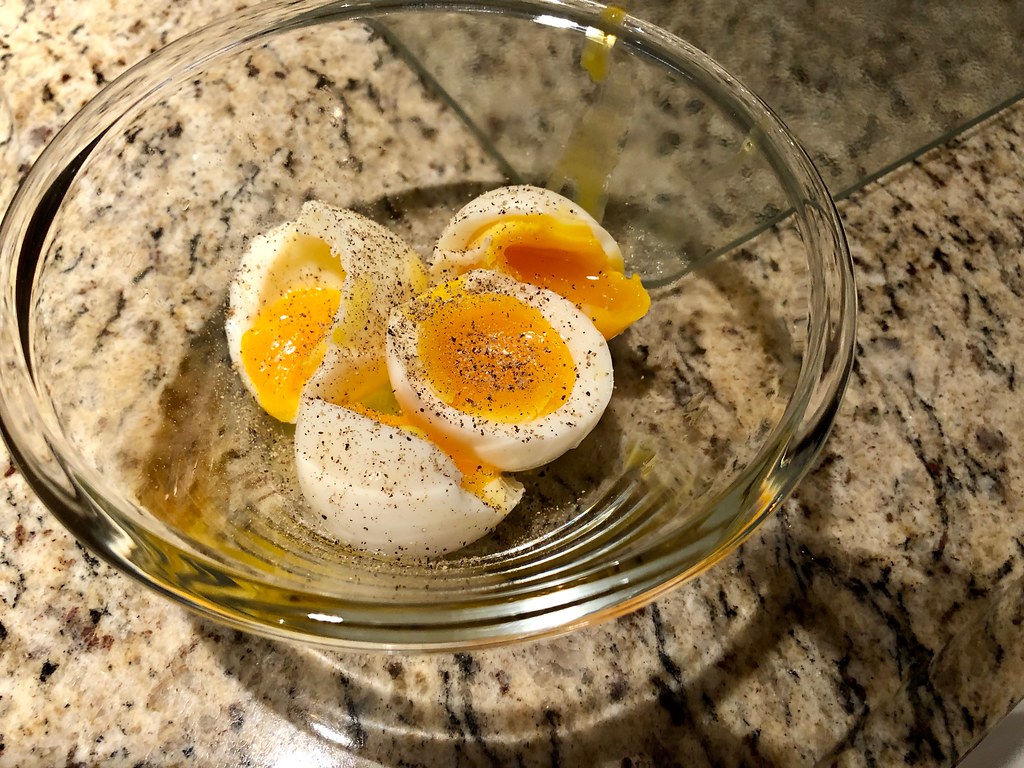Welcome to our blog post on how to make jammy eggs! If you’re a fan of runny yet slightly firm egg yolks, then this recipe is perfect for you. We all know that achieving the perfect jammy egg can be tricky – overcooking them will result in hard, rubbery yolks while undercooking them leaves the whites still raw and translucent. Don’t worry though, we’ve got you covered with a foolproof method that will give you consistently delicious jammy eggs every time. Get ready to take your breakfast game up a notch with this simple yet impressive dish that will leave your taste buds begging for more. So put on your apron and let’s dive into the world of jammy eggs together.
What is a Jammy Egg?
Before we dive into the recipe, let’s first understand what a jammy egg actually is. A jammy egg is essentially a soft-boiled egg that has been cooked just enough so that the whites are set and the yolk is still runny and creamy. The name “jammy” comes from the texture of the yolk, which resembles thick, spreadable jam. It’s a popular breakfast food in many cultures and can also be used as a topping for salads, rice bowls, and more.

Ingredients for Jammy Eggs
To make perfect jammy eggs, you only need two ingredients – eggs and water! That’s right, no fancy equipment or special ingredients required. You’ll also need a small bowl of ice water to quickly cool the eggs after cooking. Make sure to use fresh, high-quality eggs for the best results.
How to Make Jammy Eggs
- Start by filling a saucepan with enough water to completely cover your eggs. Bring the water to a boil over high heat.
- Using a slotted spoon, gently lower the eggs into the boiling water one at a time. This will prevent them from cracking.
- Let the eggs cook for exactly 6 minutes and 30 seconds, stirring occasionally to prevent the eggs from sticking to the bottom of the pot.
- While the eggs are cooking, prepare a bowl of ice water. This will be used to stop the cooking process and prevent the yolks from becoming overcooked.
- Once 6 minutes and 30 seconds have passed, use the slotted spoon to remove the eggs from the boiling water and immediately place them into the ice water.
- Let the eggs cool for 1-2 minutes in the ice water, then gently crack and peel off the shells.
- Your perfect jammy eggs are now ready to be enjoyed! Cut them open to reveal the creamy, runny yolks and serve with your favorite breakfast dishes or as a topping for salads.
A Comparison Between Jammy Eggs and Other Popular Cooked Egg Styles
While jammy eggs are renowned for their creamy, rich yolk and well-cooked whites, it’s interesting to compare them with other popular egg cooking styles.
Hard-Boiled Eggs
See more : How Long To Boil Quail Eggs | Cooking Perfect Quail Eggs
Unlike jammy eggs, hard-boiled eggs are cooked longer, around 9-12 minutes, to achieve a firm white and a completely set, pale yellow yolk. The yolk of a hard-boiled egg lacks the creaminess of a jammy egg and has a more crumbly texture.
Soft-Boiled Eggs
Soft-boiled eggs resemble jammy eggs more closely, with a set white and a runny yolk. However, the cooking time is less, usually around 4-5 minutes, resulting in a more liquid yolk compared to the custardy consistency of a jammy egg.
Poached Eggs
Poached eggs are cooked without their shell in gently simmering water. They typically have a fully runny yolk and delicate whites, making for a delightful addition to dishes like eggs Benedict. However, they are trickier to cook than jammy eggs and require more skill to keep the egg intact during the cooking process.
Scrambled Eggs
Scrambled eggs are beaten eggs cooked in a pan, often with added milk or cream. The texture varies based on personal preferences and can range from soft and slightly runny to fully set and dry. While delicious, scrambled eggs lack the distinct, separate yolk found in a jammy egg.
Tips for Jammy Egg Success
- Make sure to use a timer – the cooking time is crucial for achieving the perfect jammy egg.
- Use eggs at room temperature, as they will cook more evenly and prevent cracking when added to boiling water.
- Be gentle when peeling the eggs – run them under cold water while peeling if necessary to avoid damaging the whites.
- Experiment with different seasonings and toppings for your jammy eggs – some popular options include hot sauce, everything bagel seasoning, and crumbled bacon.
How Do You Store Jammy Eggs?
Jammy eggs can be stored in the refrigerator for up to 5 days. To prevent them from drying out, store them in an airtight container or wrap each egg individually with plastic wrap. When ready to eat, simply heat them up briefly in the microwave or on the stovetop. However, it’s best to consume jammy eggs immediately after cooking for the best texture and taste.

Health Benefits of Eating Jammy Eggs
See more : Egg Cornbread Recipe | Tips For Storing Your Egg Cornbread
Now that you know how to make delicious jammy eggs, let’s talk about the health benefits. Eggs are a great source of protein and contain essential vitamins and minerals such as vitamin D, choline, and folate. The high protein content in eggs can help with weight loss by keeping you feeling full for longer periods of time.
Additionally, the yolk of an egg contains antioxidants that can improve eye health and reduce the risk of age-related macular degeneration. So not only are jammy eggs tasty, but they also provide numerous health benefits.
Fun Ideas for Using Leftover Jammy Eggs
If you happen to have any leftover jammy eggs (although we highly doubt it), here are some fun ideas for using them:
- Add them as a topping to avocado toast for a protein-packed breakfast.
- Make an egg salad with chopped jammy eggs, mayo, and seasonings for a twist on the classic sandwich filling.
- Use them as a filling for breakfast tacos or quesadillas.
- Slice them and add to a grilled cheese sandwich for an extra creamy and indulgent twist.
FAQ: Make Jammy Eggs
Are jammy eggs safe to eat for pregnant women?
Safely enjoy runny eggs during pregnancy, says the Food Standards Agency. British Lion eggs are approved for raw or runny consumption.
Are jammy eggs gluten-free?
Eggs themselves are naturally gluten-free, as gluten is not present in the composition of eggs.
What type of pan should I use to make jammy eggs?
To make jammy eggs, use a saucepan for soft-boiling or a nonstick skillet for poaching. An egg poacher or an electric egg cooker can also be handy. Monitor cooking time for your preferred doneness.

Ronald B Gamrot is the owner of Silverking Brewery, one of the most successful craft breweries in North America. He started the business from scratch in his garage, and it has since grown into a multimillion-dollar operation. Ronald is passionate about brewing delicious beer and providing top-notch customer service. He is a respected member of the brewing community and often speaks at industry events.


I tried making jammy eggs for the first time using a nonstick skillet, and they turned out perfectly runny in the center. So simple and delicious!
Attempted jammy eggs in an Instant Pot today. The convenience was a game-changer, and the eggs were spot on. No more standing by the stove for me!
Used an egg poacher for the first time to make jammy eggs. It made the process so much simpler, and the eggs were perfectly cooked.
That’s awesome! Nonstick skillets are great for controlling the cooking process. Do you have a favorite seasoning or side to go with your jammy eggs?
Instant Pot eggs are a game-changer indeed! So glad it worked well for you. Have you experimented with any seasoning variations for your jammy eggs?
Egg poachers are fantastic for consistent results! Any tips for someone trying an egg poacher for the first time?